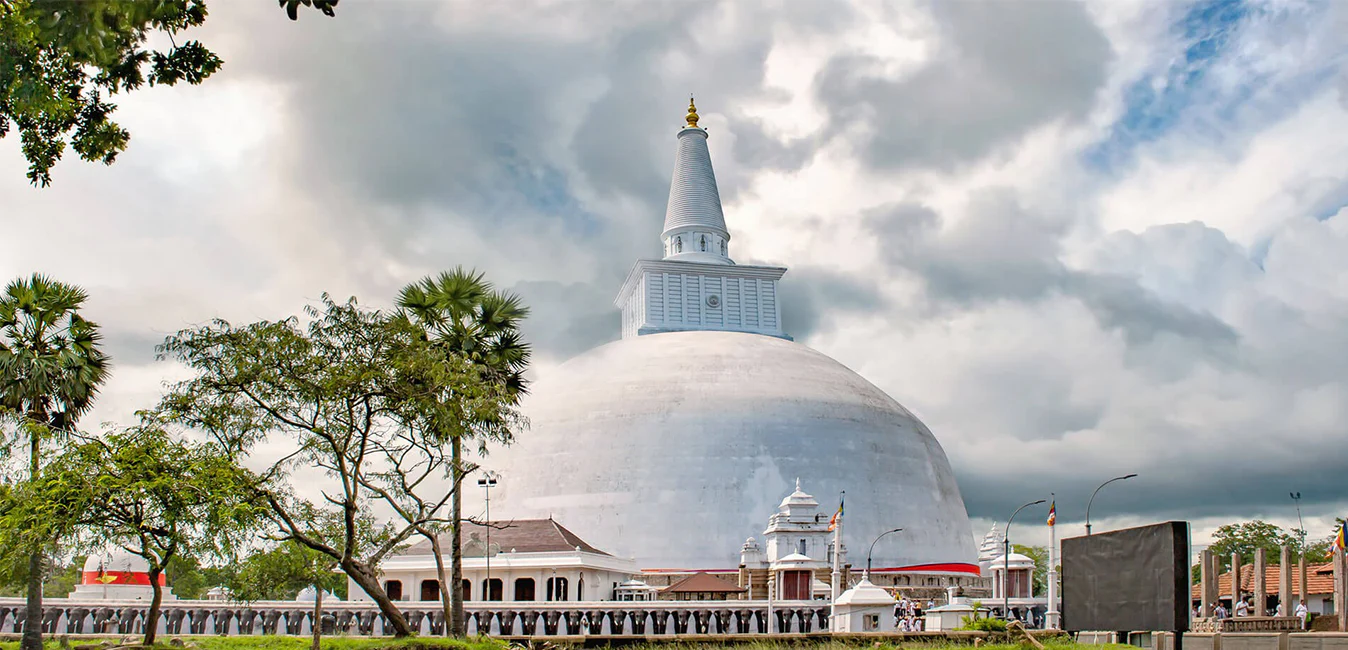
Anuradhapura City
Anuradhapura is belongs to the North Central Province in to Sri Lanka. Anuradhapura is one of the ancient capitals of Sri Lanka, famous for its well-preserved ruins of ancient Lankan civilization. The city, now a UNESCO World Heritage Site, lies 205 km north of the current capital Colombo in Sri Lanka.
أنورادابورا
أنورادابورا هي مدينة في منطقة أنورادابورا في المقاطعة الشمالية الوسطى من سريلانكا. تم إنشاء هذه المدينة المقدسة حول قطعة من «شجرة التنوير»، وهي شجرة التين الخاصة ببوذا، والتي تم إحضارها إلى هناك في القرن الثالث قبل الميلاد من قبل سانغاميتا، مؤسس مجموعة من الراهبات البوذيات. تم التخلي عن أنورادابورا، العاصمة السياسية والدينية السيلونية التي ازدهرت لمدة 1300 عام، بعد غزو عام 993. تم إخفاء هذا الموقع الرائع في غابة كثيفة لسنوات عديدة، مع قصوره وأديرته وآثاره، ويمكن الوصول إليه الآن مرة أخرى.
حول منطقة أنورادابورا
تنتمي أنورادابورا إلى المقاطعة الشمالية الوسطى في سريلانكا. أنورادابورا هي واحدة من العواصم القديمة في سريلانكا، وتشتهر بأطلال الحضارة اللانكية القديمة المحفوظة جيدًا. تقع المدينة، التي أصبحت الآن أحد مواقع التراث العالمي لليونسكو، على بعد 205 كم شمال العاصمة الحالية كولومبو في سريلانكا.
في مدينة أنورادابورا المقدسة وفي المنطقة المجاورة يوجد عدد كبير من الآثار. تتكون الآثار من ثلاث فئات من المباني والداغوبا والمباني الرهبانية والبوكونا (البرك). كان لدى المدينة بعض أنظمة الري الأكثر تعقيدًا في العالم القديم، وتقع في المنطقة الجافة من البلاد، وقامت الإدارة ببناء العديد من الخزانات لري الأرض. معظم المدنيين من السنهالية، بينما يعيش التاميل والمورون السريلانكيون في المنطقة.
أماكن خاصة في أنورادابورا:
About Anuradhapura District
Anuradhapura is belongs to the North Central Province in to Sri Lanka. Anuradhapura is one of the ancient capitals of Sri Lanka, famous for its well-preserved ruins of ancient Lankan civilization. The city, now a UNESCO World Heritage Site, lies 205 km north of the current capital Colombo in Sri Lanka.
In the sacred city of Anuradhapura and in the vicinity are a large number of ruins. The ruins consist of three classes of buildings, dagobas, monastic buildings, and pokuna (ponds). The city had some of the most complex irrigation systems of the ancient world, situated in the dry zone of the country the administration built many tanks to irrigate the land. Most of the civilians are Sinhala, while Tamils and Sri Lankan Moors live in the district.
About North Central Province
North Central Province which is the largest province in the country covered 16% of total country's land area. North Central Province consist two districts called Polonnaruwa and Anuradhapure. Anuradhapura is the largest district in Sri Lanka. Its area is 7,128 km².
North Central Province has numerous potentials for Investors to start their Businesses, especially Agriculture, agro based industries and Livestock sectors. More than 65% of North Central Province's people depend on basic Agriculture and agro base industries. NCP also called "Wew Bendi Rajje" because there are more than 3,000 medium and large scale tanks situated in the province. Sri maha bodiya, Ruwanweli seya, Thuparama dageba, Abayagiri Monastry, Polonnaruwa Rankot wehera, Lankathilake are scared











